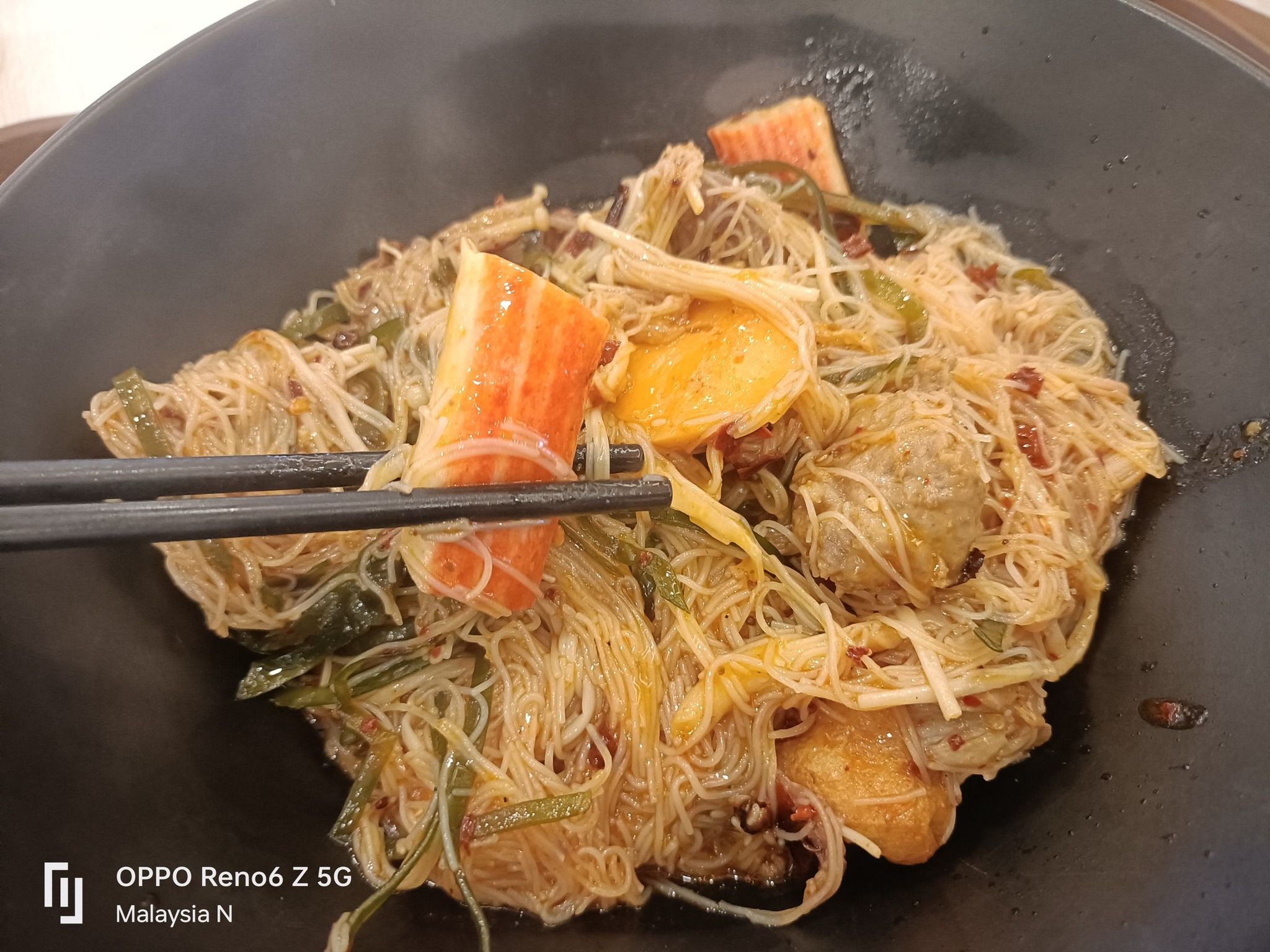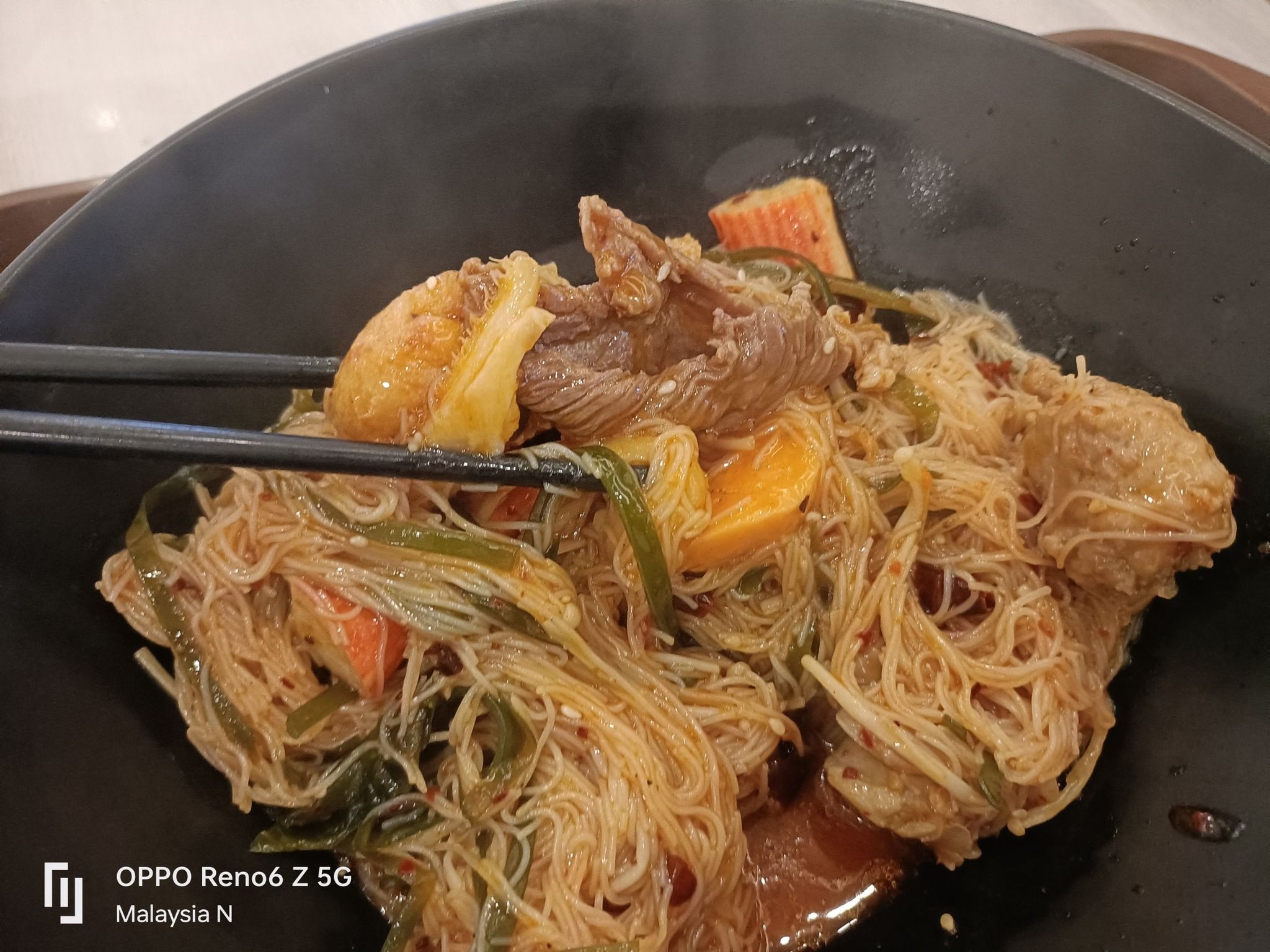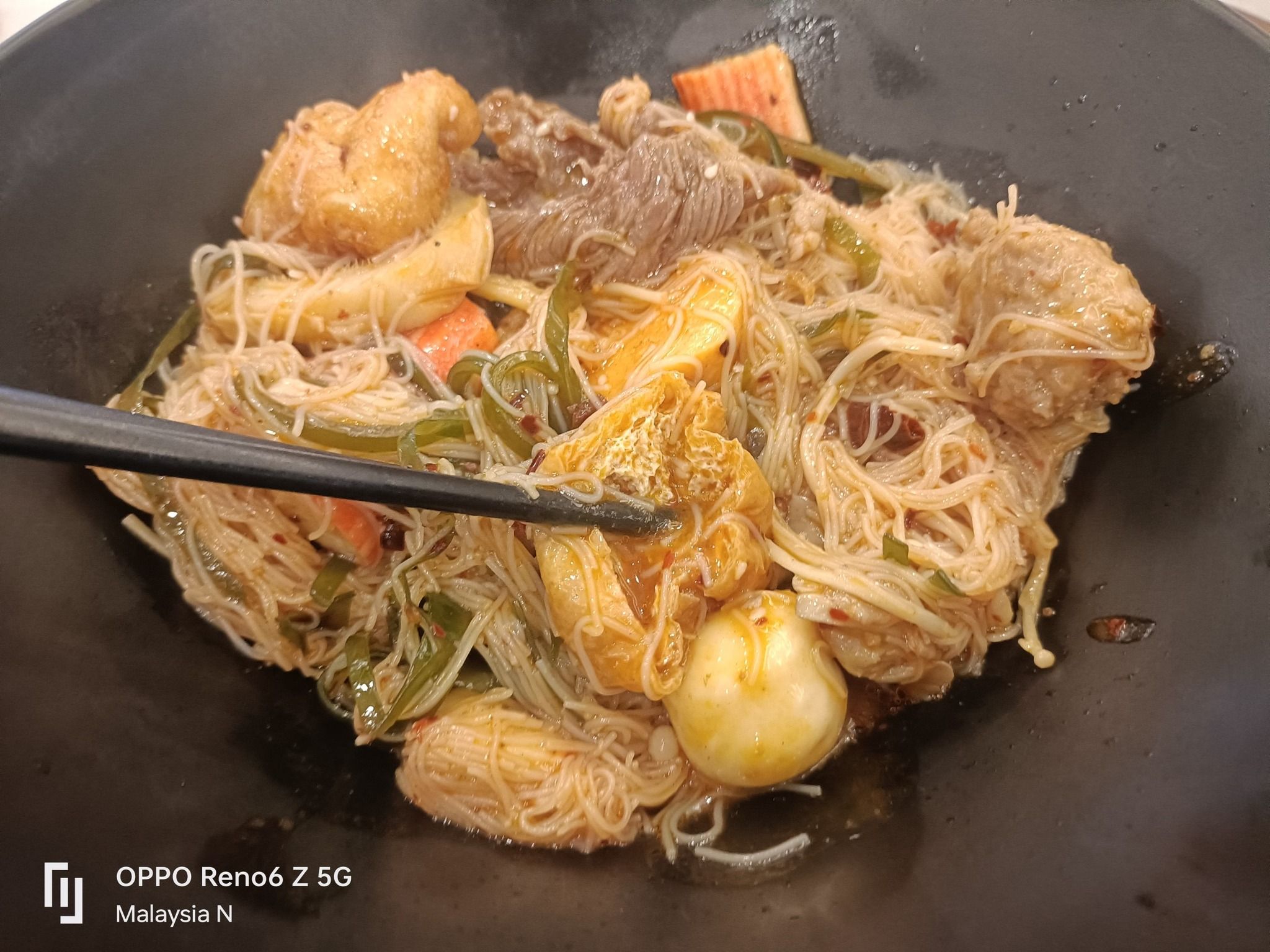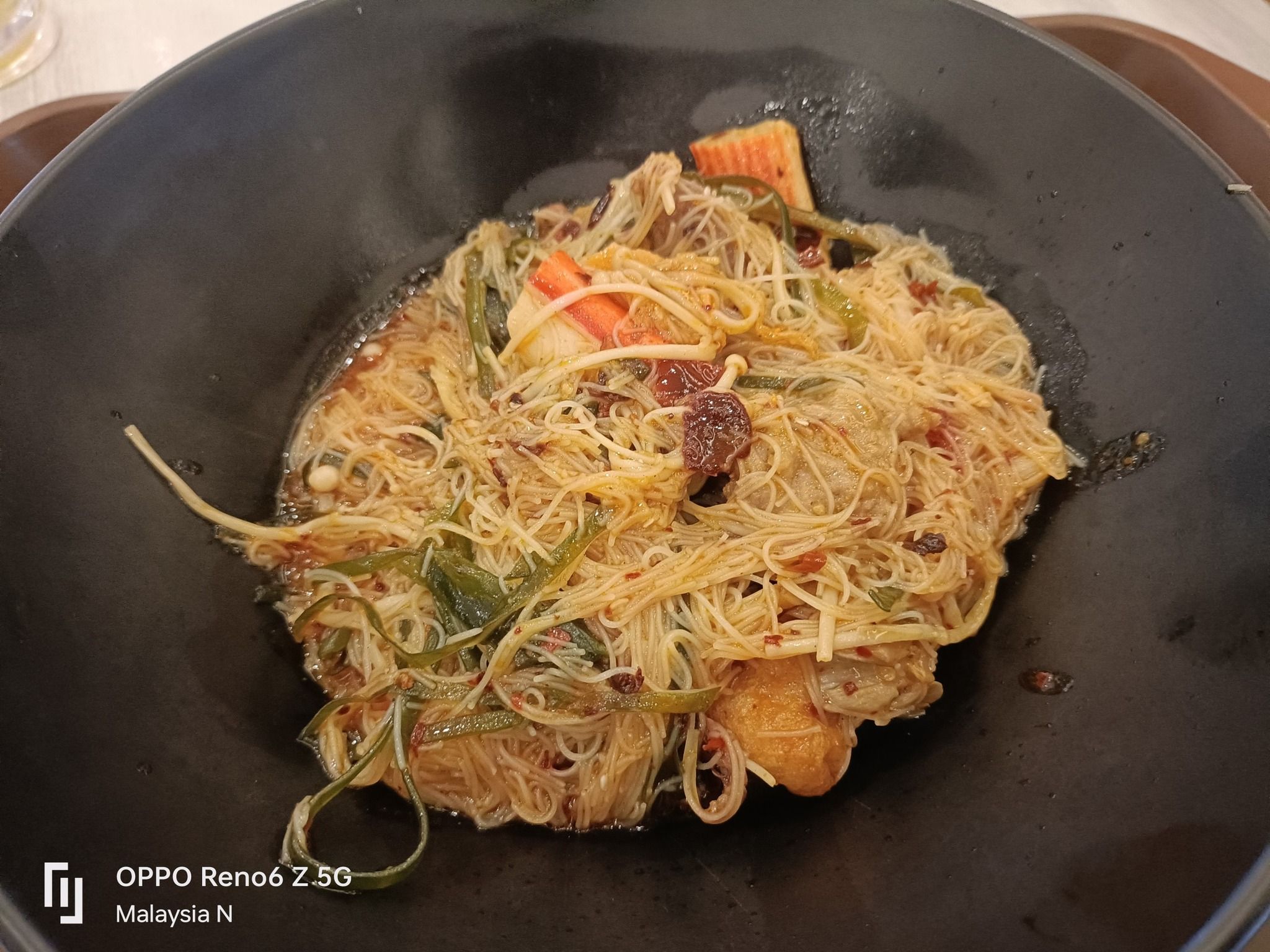
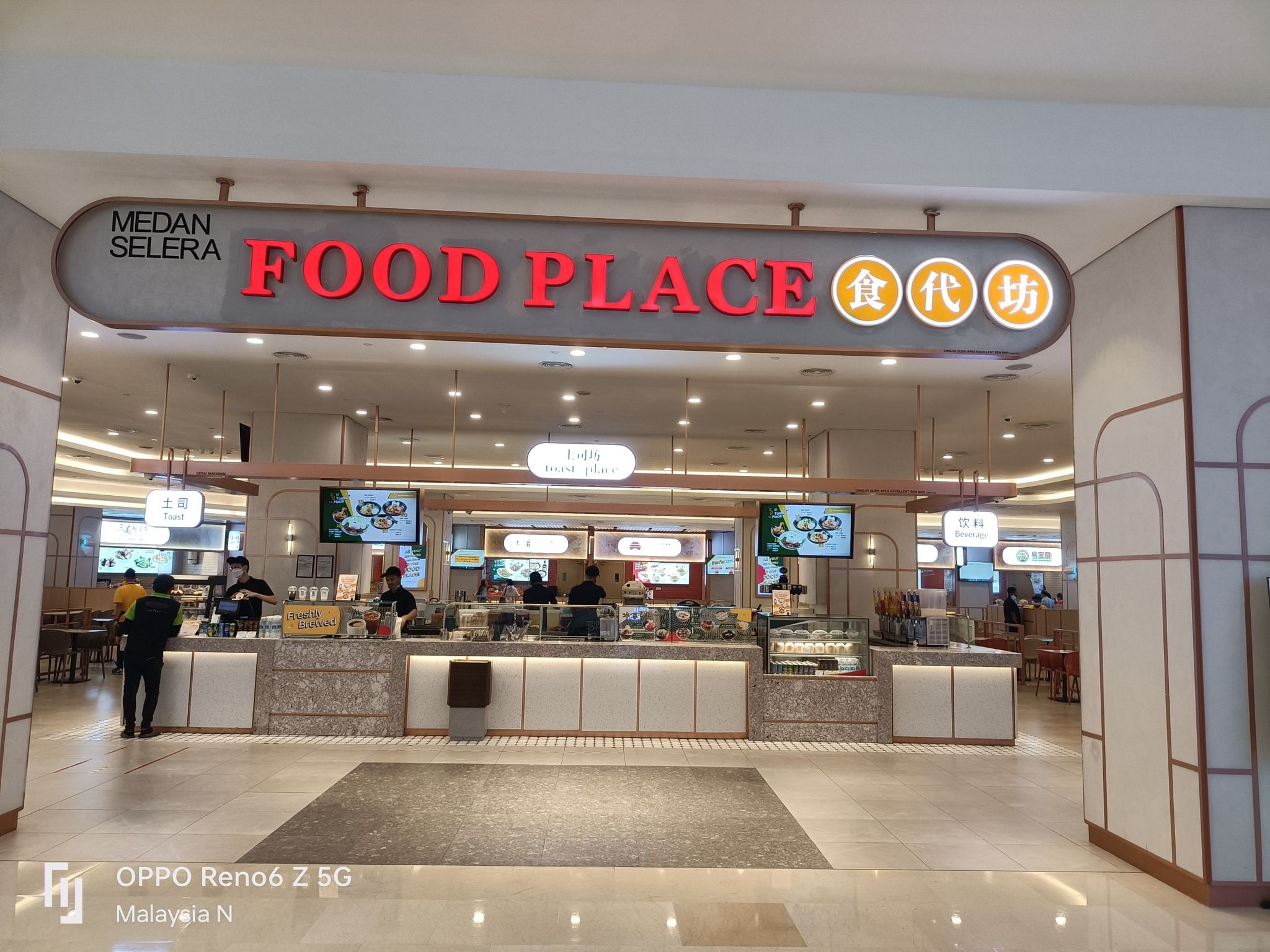
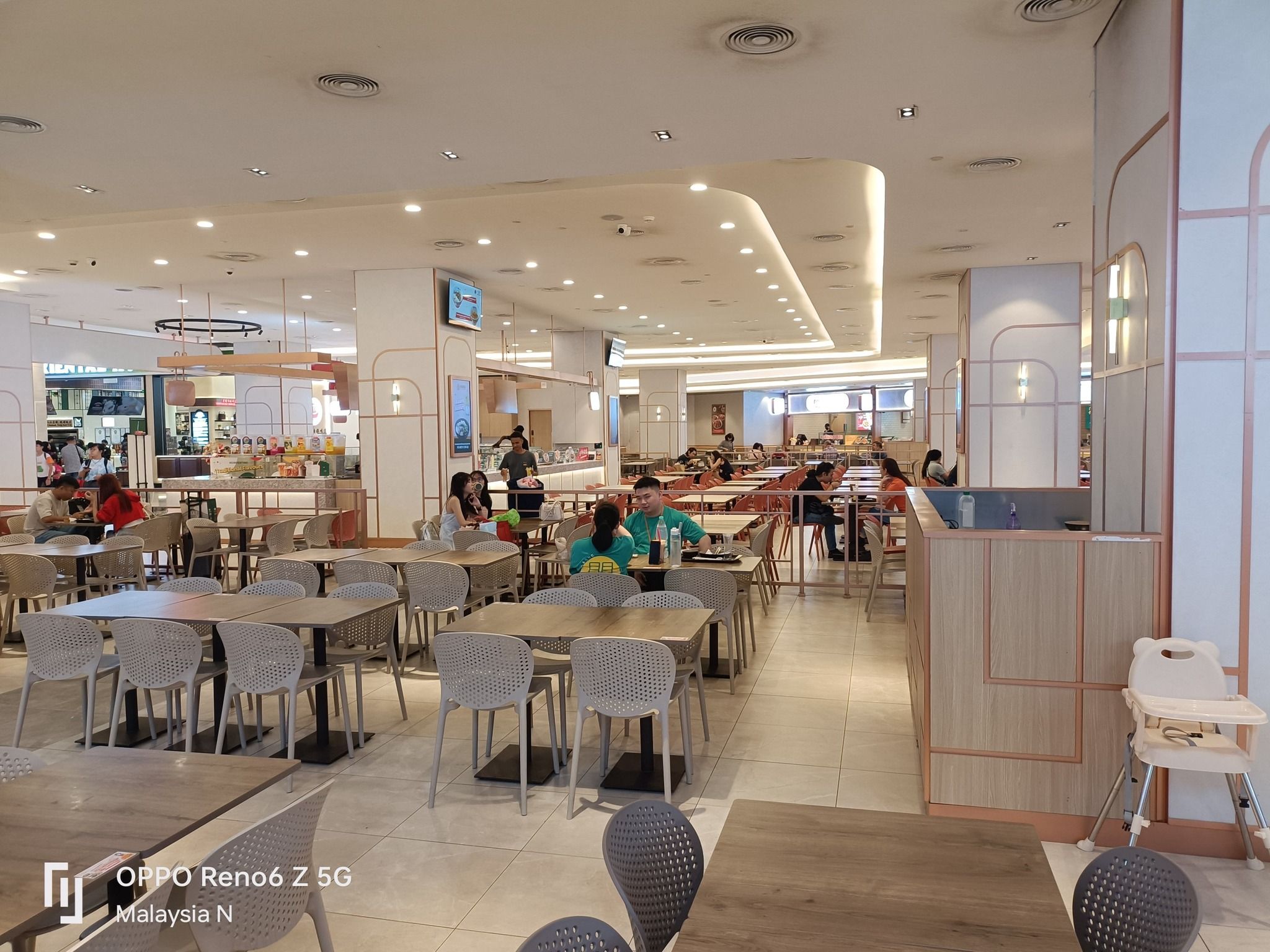
Today, I revisited the Food Place food court, located at Pavilion Mall. The food court is located beside the Oriental Kopi Restaurant.
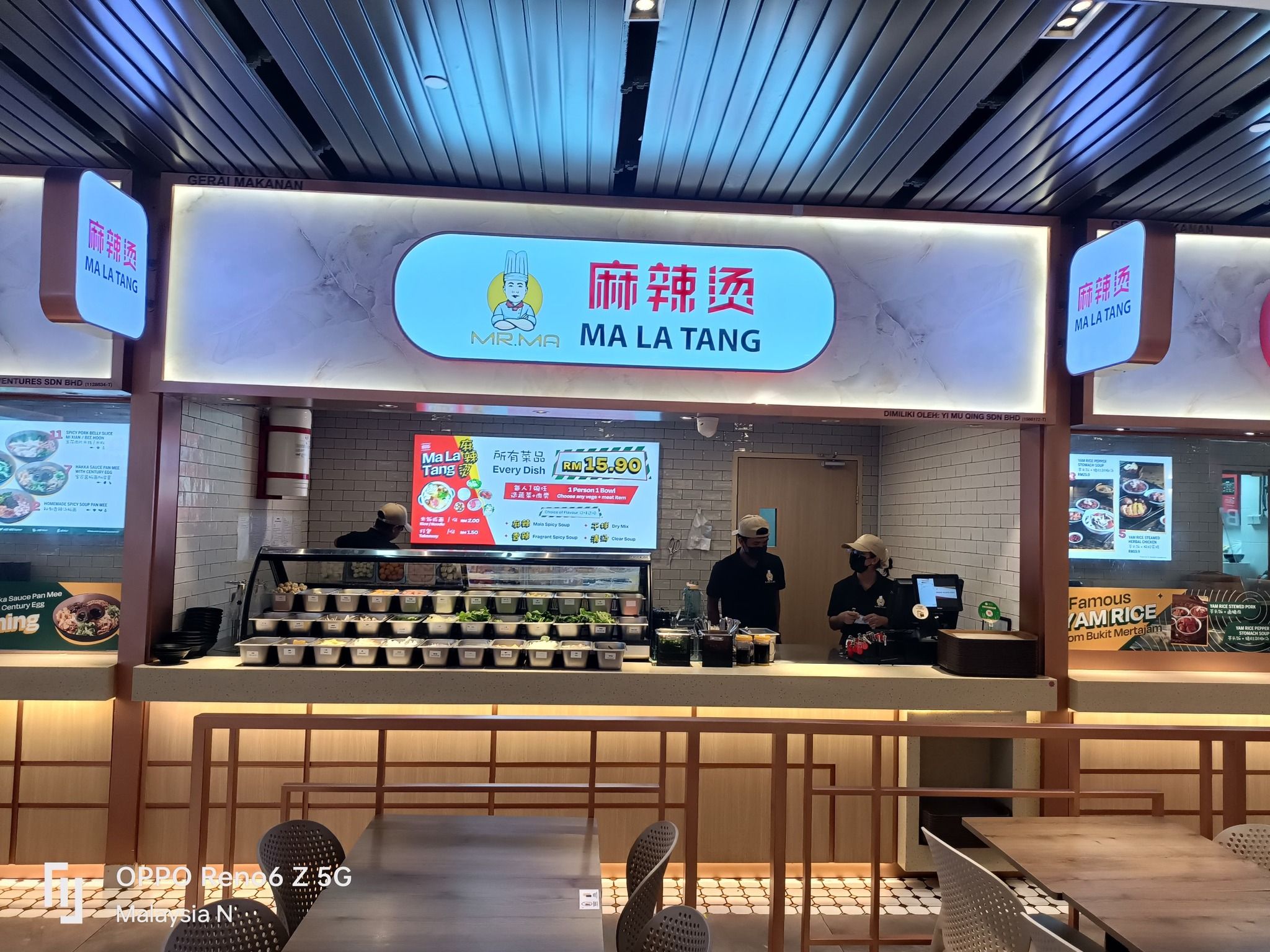
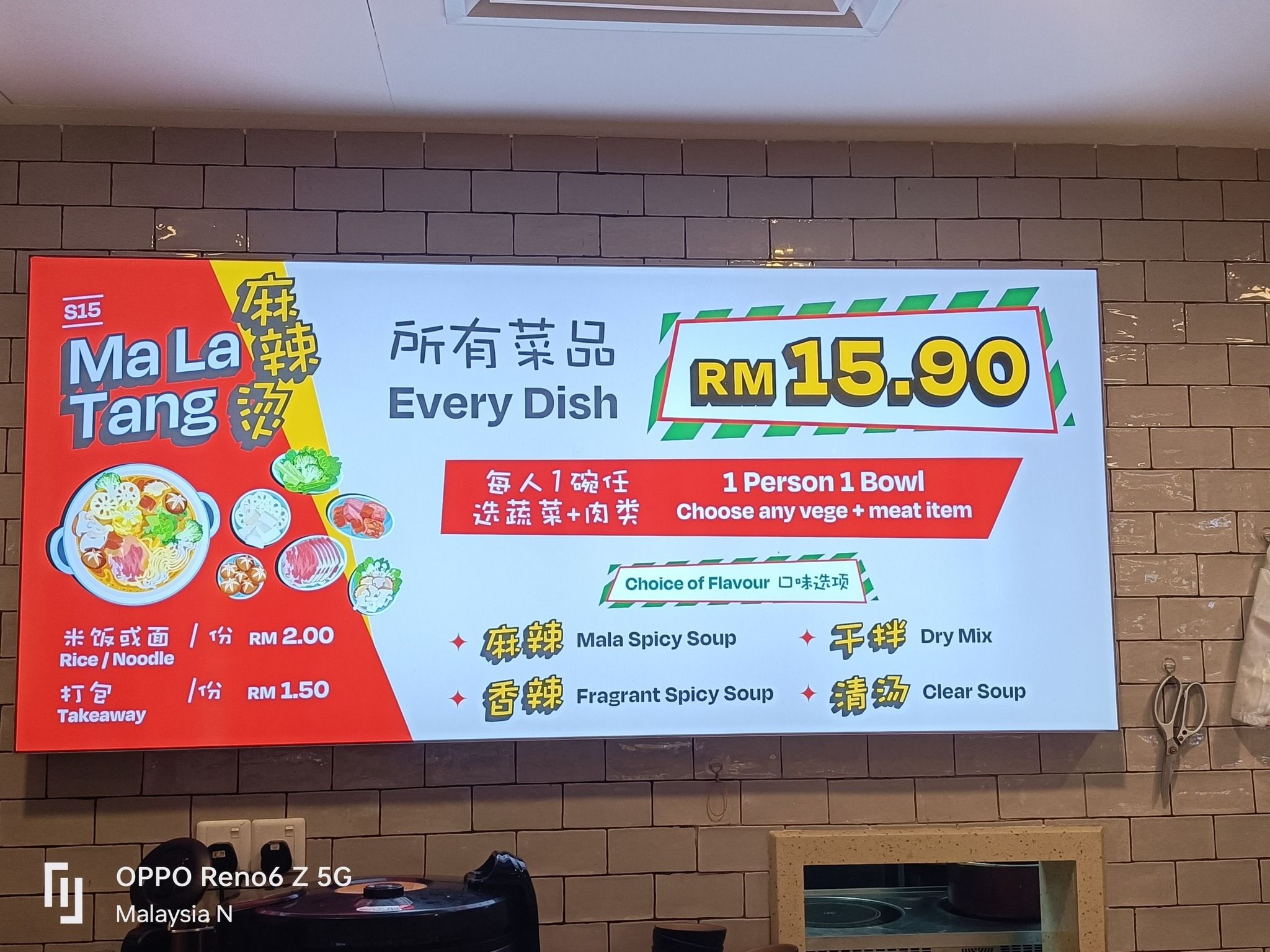
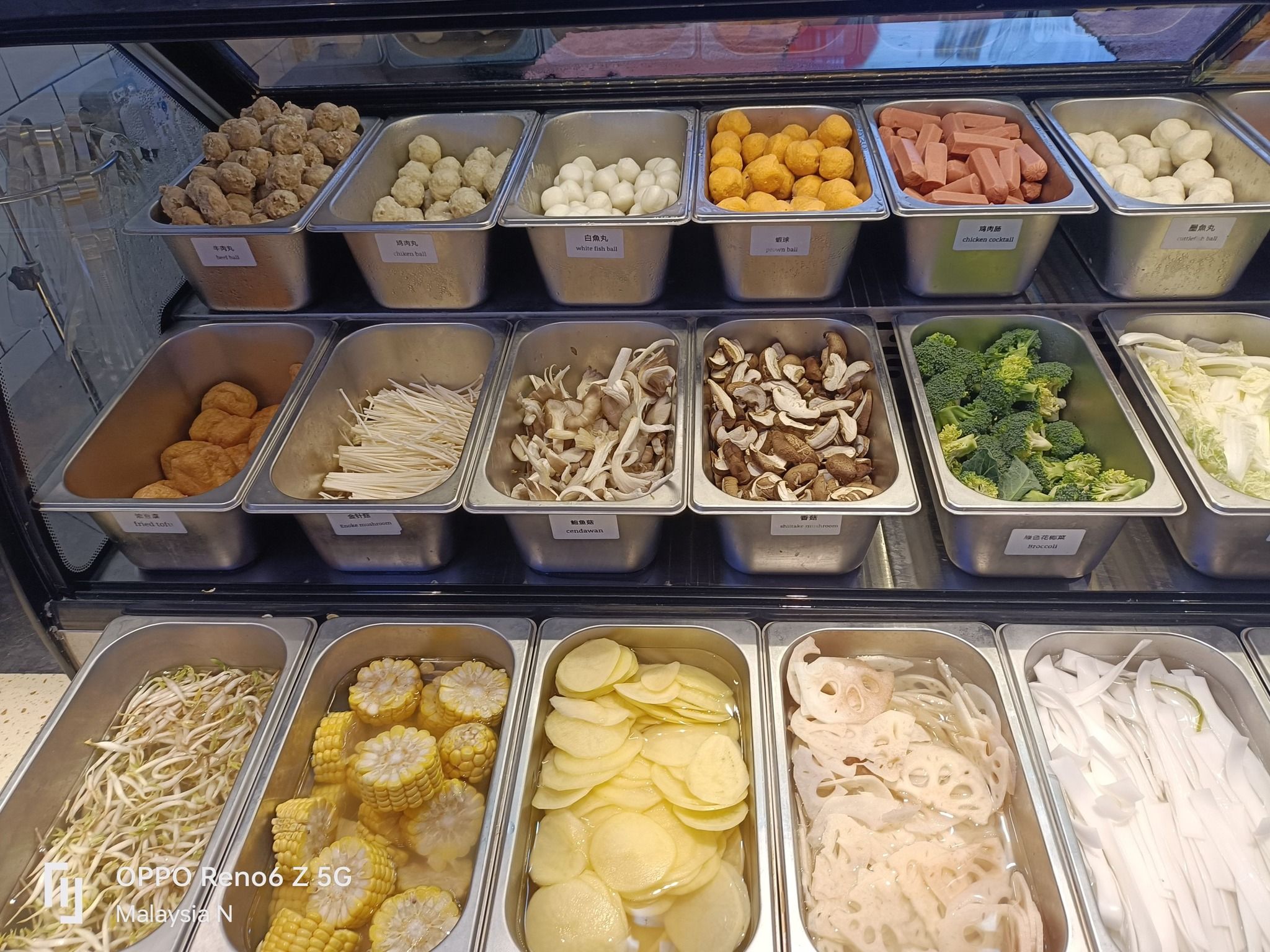
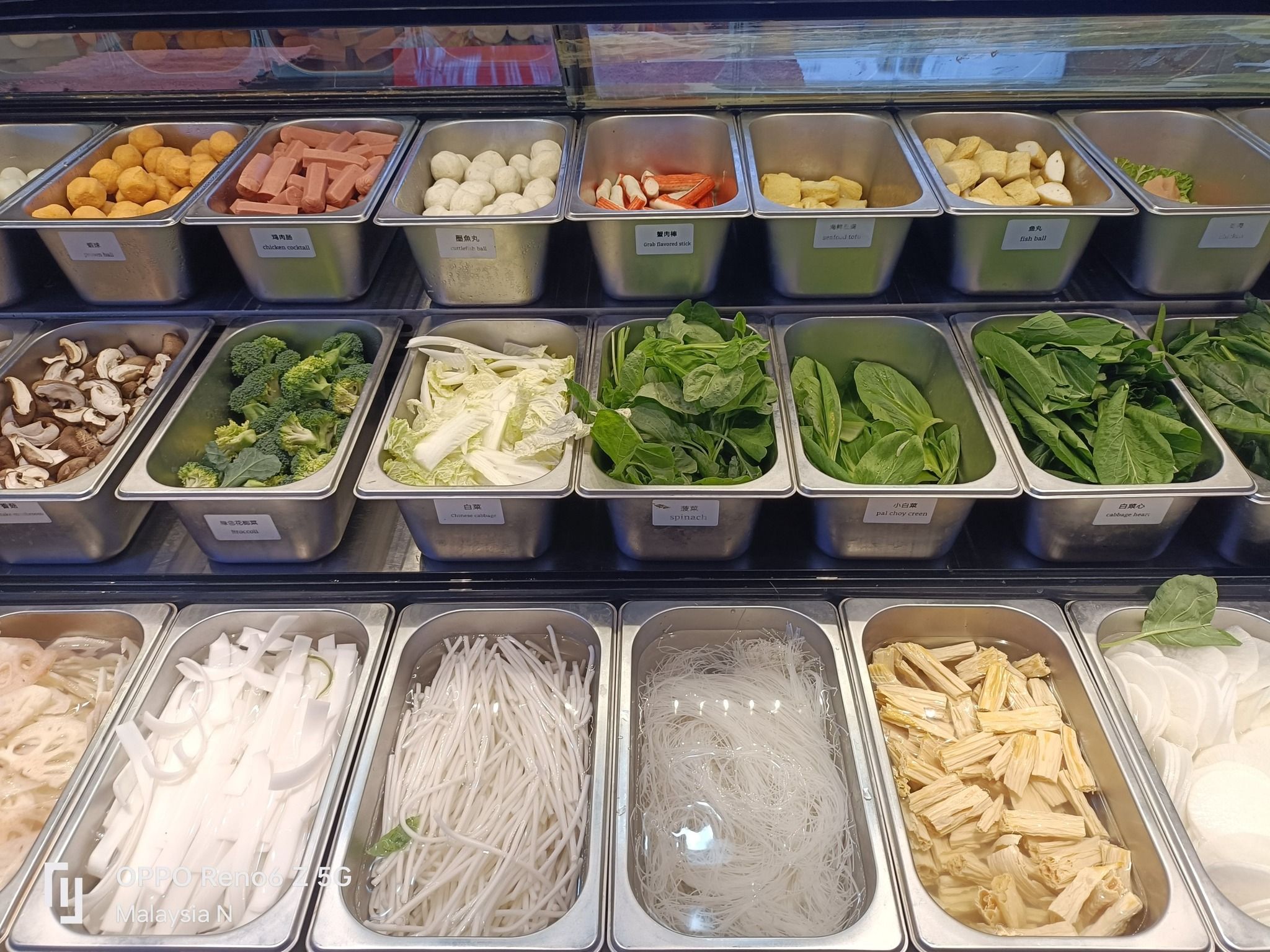
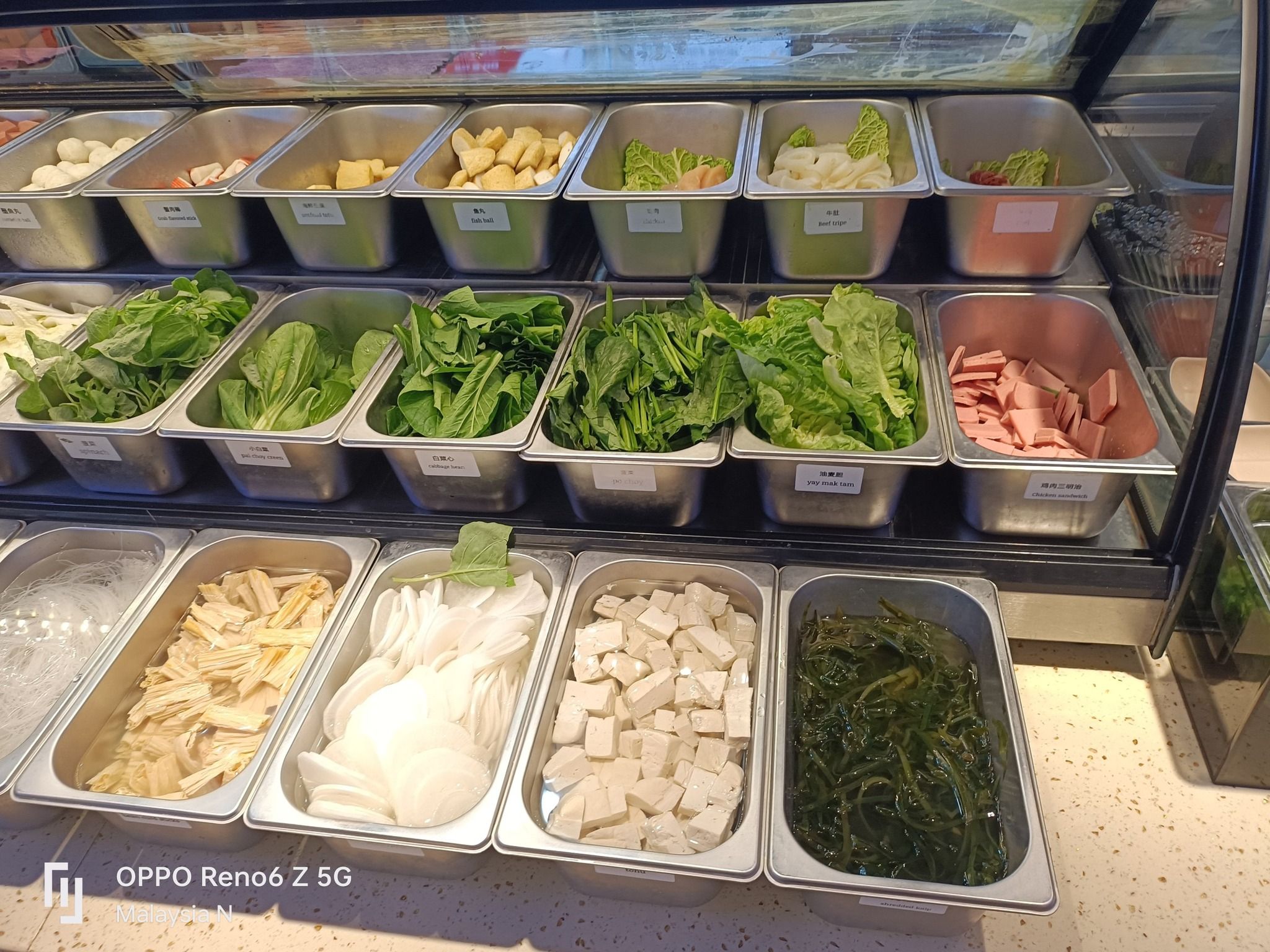
This time, I tried the Ma la Tang stall that costs RM15.90 per bowl regardless of what you pick.
The selection counter is the central feature of the stall, designed for customers to pick their own ingredients in a customizable hot pot/stir-fry style. The ingredients are neatly organised in metal trays within a refrigerated display case to ensure freshness
The display offers an extensive variety of types of meatballs (plain, white fish balls, yellow fish balls), sliced processed meats like ham/sausages, Crab sticks, chicken and beef meat
There is a wide selection of greens and mushrooms, including spinach, broccoli, Chinese cabbage, Enoki mushrooms (金针菇), Shiitake and Oyster mushrooms. Heartier vegetables like corn on the cob, potatoes (thinly sliced), and bean sprouts are also available.
If you like Starches and Tofu Products, there are tofu (cubes and fried puffs), glass noodles (vermicelli style), White radishes, Lotus root (sliced) and kelp strips.
Malatang's origins trace back to the Sichuan province of China, specifically near the Minjiang River around the city of Leshan. The dish is said to have originated with boatmen and dock workers who plied their trade on the Yangtze River. The work was physically taxing, and the damp, foggy weather made them susceptible to cold and illness.
To warm up and stave off sickness, these workers would gather and cook wild herbs, vegetables, and whatever simple food they had in a communal pot of boiling water, adding pungent seasonings like Sichuan pepper and ginger. The intense spiciness would help dispel the cold and dampness.
Local street vendors recognized the popularity of this quick, spicy meal. They began setting up stalls, often with a large communal cauldron of simmering broth, where ingredients were typically placed on bamboo skewers for customers to pick. This was a fast, cheap, and customizable form of hot pot, earning it the nickname "hot pot for one." Customers would select their skewers, have them cooked, and then dip them in a chili dip.
Malatang has evolved significantly. The skewered ingredients were replaced by the self-serve, pay-by-weight (or in my case, pay-by-bowl) style common in modern chain restaurants across China and internationally. The introduction of different soup bases (like bone broth or a less spicy, milky broth in Northeast China) and the rise of the dry-mix version (Mala Xiang Guo) have broadened its appeal, turning a humble street snack into a popular, versatile fast-casual dining experience across Asia, including Malaysia.

